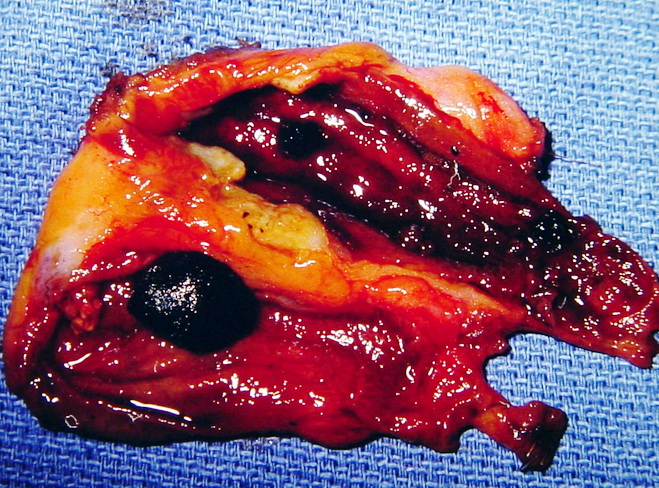Gallbladder Duplication


Comments:
Gallbladder Duplication: This is a rare developmental defect. In some instances, there may even be 3 gallbladders. There is female predominance in symptomatic cases and equal sex distribution in asymptomatic patients. Duplication occurs when the cystic primordium splits around 6th week of embryogenesis. Depending upon the degree of the split, there may be bifid gallbladder, two gallbladders sharing a cystic duct (Y configuration) or two separate gallbladders attached to the biliary tree via their own cystic ducts (H configuration). The distinction between H and Y configuration is important to recognize when planning for surgical management. The full spectrum of diseases found in single gallbladder is also seen in multiple gallbladders (note the black stone in the lower gallbladder in this image). Prophylactic cholecystectomy of multiple gallbladders is not recommended in asymptomatic cases. However, if one of them develops a pathology, all gallbladders are removed. Image courtesy of: Dr. James McClenathan, Dept. of Surgery, University of Arizona College of Medicine, Tucson, AZ; used with permission.Other Congenital Gallbladder Anomalies: diverticula, agnesis, septation, phrygian cap, anomalous position, and heterotopic tissues.



